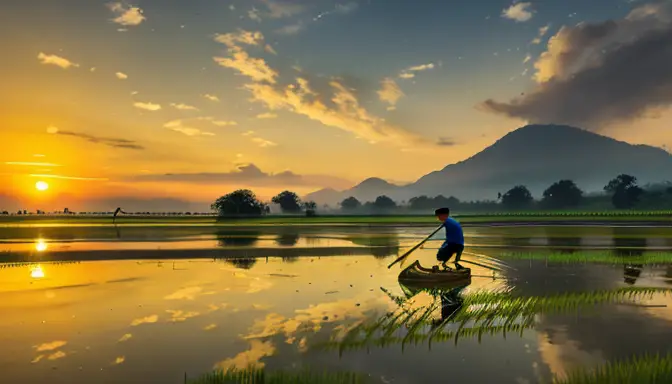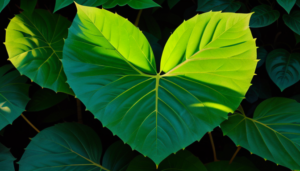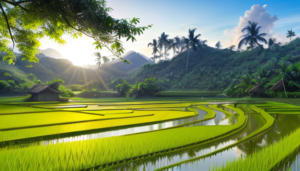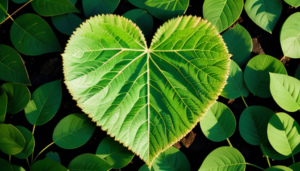Planting rice for ducks is a fascinating process that requires careful planning and execution to create a thriving ecosystem for both the ducks and the rice plants. By following a step-by-step guide, you can ensure that your rice paddies provide an ideal environment for ducks to forage and thrive while also benefiting from the advantages of rice cultivation.
When embarking on this journey, it’s essential to understand the benefits of planting rice specifically for ducks. From increased food sources to the creation of a natural habitat and promoting environmental sustainability, the advantages are numerous and significant.

To start, choosing the right rice varieties is crucial. Consider factors such as nutrition, growth habits, and compatibility with duck foraging behavior to select the best varieties that will support both the ducks and the rice crop.
Preparing the rice paddies is a meticulous process that involves soil preparation, water management, and planting techniques tailored to create a duck-friendly environment. By following these steps carefully, you can ensure the success of your rice-duck ecosystem.
Integrating ducks into the rice fields requires careful planning and management to maintain a harmonious coexistence between the ducks and the rice plants. Proper guidance on introducing ducks, managing their presence, and ensuring their well-being is essential for a successful partnership.
Harvesting rice with ducks can be a rewarding experience when done correctly. Explore methods that maximize the benefits for both the rice crop and the ducks, ensuring a bountiful harvest while maintaining a healthy ecosystem.
Maintaining the rice-duck ecosystem is an ongoing process that involves pest control, water management, and fostering a balanced environment for sustainable agriculture. By implementing proper maintenance practices, you can ensure the longevity and productivity of your rice paddies.
Monitoring and evaluating the success of your rice-duck cultivation is key to optimizing the benefits for both rice production and duck habitat. Learn how to assess the outcomes, make necessary adjustments, and plan for future seasons to continue reaping the rewards of this unique agricultural approach.
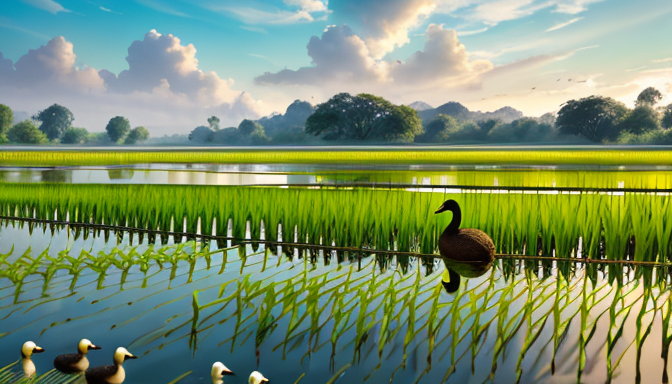
Benefits of Planting Rice for Ducks
Planting rice for ducks offers a multitude of benefits that contribute to a thriving ecosystem. By cultivating rice specifically for ducks, you not only provide a sustainable food source for the waterfowl but also create a natural habitat that supports their well-being. Let’s delve into the advantages of this unique agricultural practice:
- Increased Food Sources: Planting rice for ducks ensures a steady and nutritious food supply for the waterfowl, promoting their health and vitality.
- Natural Habitat Creation: The rice fields serve as a diverse ecosystem, attracting various insects and organisms that ducks feed on, enhancing biodiversity.
- Environmental Sustainability: By integrating ducks into rice cultivation, you establish a symbiotic relationship that benefits both the environment and the agricultural output.
These benefits not only support the well-being of the ducks but also contribute to a more sustainable and balanced agricultural system. Embracing the practice of planting rice for ducks can lead to a harmonious coexistence between wildlife and farming activities.
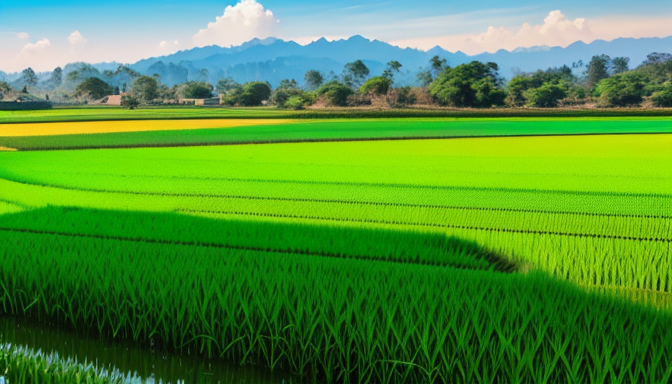
Choosing the Right Rice Varieties
When it comes to choosing the right rice varieties for planting specifically for ducks, several factors need to be considered to ensure a successful and beneficial environment for both the ducks and the rice crop. Let’s delve into the key aspects to keep in mind:
- Nutritional Value: Opt for rice varieties that offer a high nutritional value for ducks, providing them with essential nutrients to support their health and well-being.
- Growth Habits: Select rice varieties that have growth habits conducive to duck foraging behavior, making it easier for the ducks to access and consume the rice.
- Compatibility: Choose rice varieties that are compatible with the presence of ducks, ensuring that the ducks can coexist harmoniously with the rice plants without causing damage.
By carefully considering these factors and selecting the most suitable rice varieties, you can create an ideal environment for both ducks and rice cultivation, maximizing the benefits for both aspects of the ecosystem.
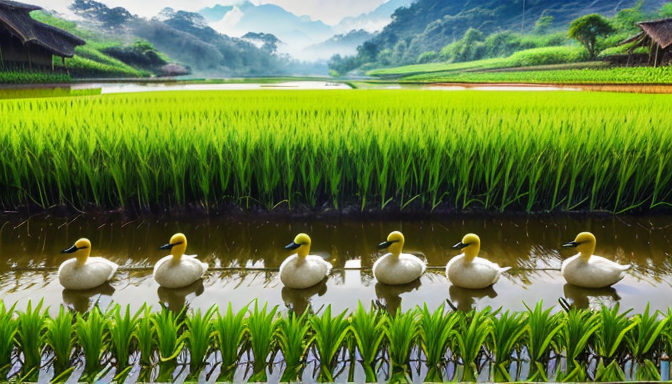
Preparing the Rice Paddies
When it comes to preparing the rice paddies for duck-friendly cultivation, attention to detail is key to creating an environment that supports both the rice plants and the ducks. Proper preparation ensures a harmonious coexistence that maximizes the benefits for both. Here are the essential steps to get your rice paddies ready:
- Soil Preparation: Begin by assessing the soil quality and making any necessary amendments to ensure it is suitable for rice cultivation. Properly tilled and aerated soil provides a healthy foundation for the rice plants to thrive.
- Water Management: Establish a reliable water management system to maintain the ideal water levels in the paddies. Ducks thrive in wet environments, so ensuring consistent water availability is crucial.
- Planting Techniques: Follow recommended planting techniques for rice cultivation, taking into account the specific needs of the chosen rice varieties. Proper spacing and planting depth are essential for optimal growth.
By meticulously preparing the rice paddies with these steps in mind, you can create a conducive environment that supports both the growth of the rice plants and the well-being of the ducks. This preparation sets the stage for a successful rice-duck ecosystem that benefits from the symbiotic relationship between the two elements.
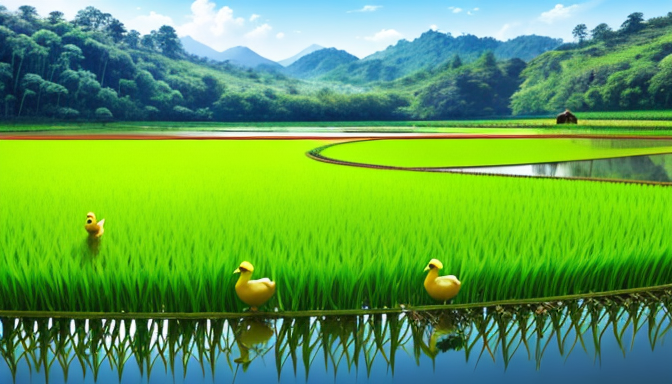
Integrating Ducks into the Rice Fields
Integrating ducks into the rice fields is a crucial step in creating a harmonious ecosystem that benefits both the ducks and the rice crop. Ducks play a vital role in pest control and nutrient recycling, making them valuable allies in sustainable agriculture. To successfully integrate ducks into the rice fields, consider the following steps:
- Gradual Introduction: Start by introducing a small number of ducks to the fields and gradually increase their presence to avoid overwhelming the ecosystem.
- Provide Shelter: Ensure that ducks have access to shelter, such as nesting areas or floating platforms, to protect them from predators and adverse weather conditions.
- Water Management: Maintain proper water levels in the paddies to accommodate the ducks’ natural behavior of dabbling and foraging for insects and weeds.
- Monitor Interaction: Observe how ducks interact with the rice plants and make adjustments as needed to prevent damage while still allowing them to forage effectively.
By integrating ducks into the rice fields thoughtfully and responsibly, you can create a balanced ecosystem where ducks thrive, pests are controlled naturally, and rice production flourishes.
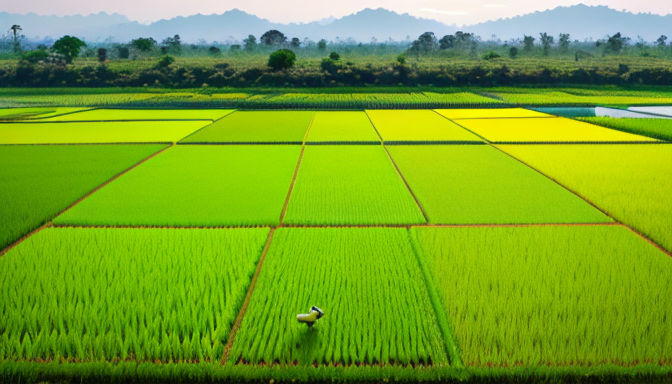
Harvesting Rice with Ducks
When it comes to harvesting rice with ducks, it’s essential to approach the process with care and consideration for both the crop and the feathered companions. Ducks can play a vital role in the rice fields, contributing to pest control and ecosystem balance. Here are some key steps to ensure a successful harvest:
- Timing is Key: Determine the optimal timing for harvesting rice when the grains are mature but not overripe. This ensures a good yield while providing ample food for the ducks.
- Coordinating Duck Movements: Before harvesting, make sure to coordinate the movements of the ducks to prevent trampling of the rice plants. Create pathways or designated areas for the ducks to move around.
- Utilizing Duck Foraging: Allow the ducks to forage in the fields after harvest to consume remaining grains and pests. This not only benefits the ducks but also helps in cleaning up the fields naturally.
- Minimizing Disturbance: During the harvesting process, minimize disturbances to the ducks to avoid stress. Loud noises or sudden movements can disrupt the ducks’ natural behavior.
By following these steps and considering the interaction between rice cultivation and duck presence, you can optimize the benefits of both elements in a harmonious ecosystem. Harvesting rice with ducks can be a rewarding experience that promotes sustainable agriculture and wildlife conservation.
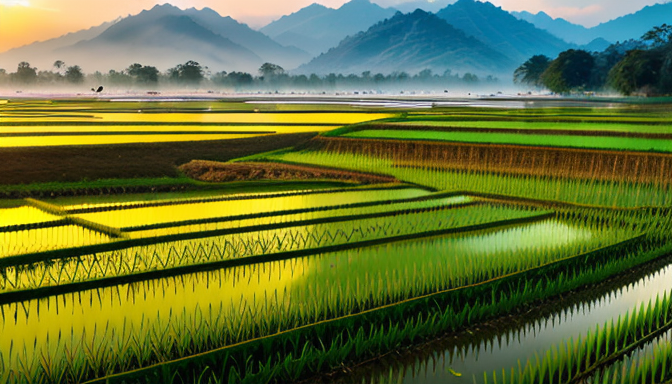
Maintaining the Rice-Duck Ecosystem
When it comes to maintaining the delicate balance of the rice-duck ecosystem, attention to detail is key. By implementing proper practices, you can ensure the sustainability and productivity of both the rice crop and the duck habitat. Here are some essential tips for maintaining the harmony within this unique ecosystem:
- Pest Control: Implement natural pest control methods to protect both the rice plants and the ducks from harmful pests. Utilizing ducks’ natural foraging behavior to control pests can be an effective and environmentally friendly approach.
- Water Management: Maintain proper water levels in the rice paddies to support healthy rice growth and provide a suitable habitat for ducks. Regular monitoring and adjustment of water levels are crucial for sustaining the ecosystem.
- Balance in Biodiversity: Encourage a diverse range of plant and animal species within the rice-duck ecosystem to promote a balanced environment. This diversity can help in natural pest control and nutrient cycling, benefiting both the rice crop and the ducks.
By following these guidelines and staying attuned to the needs of both the rice and the ducks, you can foster a thriving ecosystem that supports sustainable agriculture and wildlife conservation simultaneously.
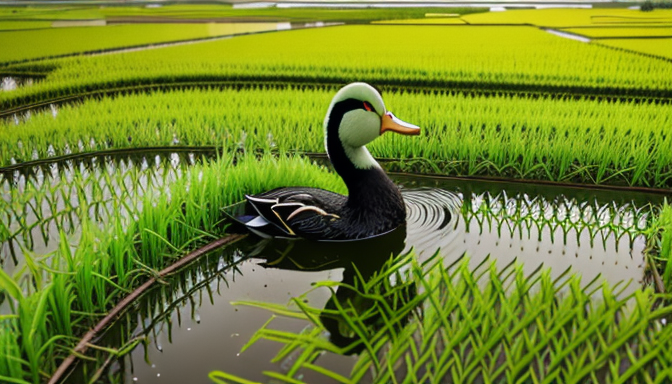
Monitoring and Evaluating Success
When it comes to in your rice-duck cultivation venture, it’s essential to stay vigilant and proactive. Regular monitoring allows you to track the progress of both your rice crop and the well-being of your ducks. By keeping a close eye on key indicators, you can quickly identify any potential issues and take timely action to address them.
One effective way to monitor success is to maintain detailed records of your activities, observations, and outcomes. This can help you identify patterns, trends, and areas for improvement. Consider creating a logbook where you can jot down important information such as planting dates, harvest yields, duck behavior, and any pest or disease occurrences.
Additionally, evaluation plays a crucial role in determining the overall success of your rice-duck ecosystem. Regularly assessing the health of your rice plants, the condition of the paddies, and the behavior of the ducks can provide valuable insights into the effectiveness of your cultivation practices.
As you evaluate the success of your rice-duck system, don’t forget to solicit feedback from experts, fellow farmers, or agricultural extension services. Their input and advice can offer fresh perspectives and help you make informed decisions to optimize your outcomes.
To optimize the benefits for both rice production and duck habitat, it’s crucial to adapt and adjust your strategies based on the monitoring and evaluation results. By continuously refining your approach, you can create a more sustainable and productive rice-duck ecosystem that benefits both your agricultural endeavors and the local wildlife.
Frequently Asked Questions
- Can ducks help in controlling pests in rice paddies?
Yes, ducks are excellent natural pest controllers. They feed on insects, snails, and weeds, reducing the need for chemical pesticides.
- How do ducks benefit the rice fields?
Ducks help in fertilizing the soil with their droppings, eat harmful insects, and their paddling helps in aerating the waterlogged soil, promoting healthy rice growth.
- Do ducks harm the rice crop?
When managed properly, ducks do not harm the rice crop. By timing their presence correctly and monitoring their impact, ducks can actually enhance rice production.
- What precautions should be taken when integrating ducks into the rice fields?
Ensure that the ducks have access to clean water, monitor their behavior to prevent overgrazing, and provide shelter to protect them from predators.
- How can I ensure the sustainability of the rice-duck ecosystem?
Regularly assess the water quality, maintain a balance between duck population and rice field area, and avoid the excessive use of chemicals that may harm the ducks.
- Unraveling the Mystery of Yellowing Snake Plants - May 16, 2024
- Troubleshooting Yellowing Citronella Plants - May 16, 2024
- Troubleshooting: Elephant Ear Plant Turning Yellow - May 16, 2024
